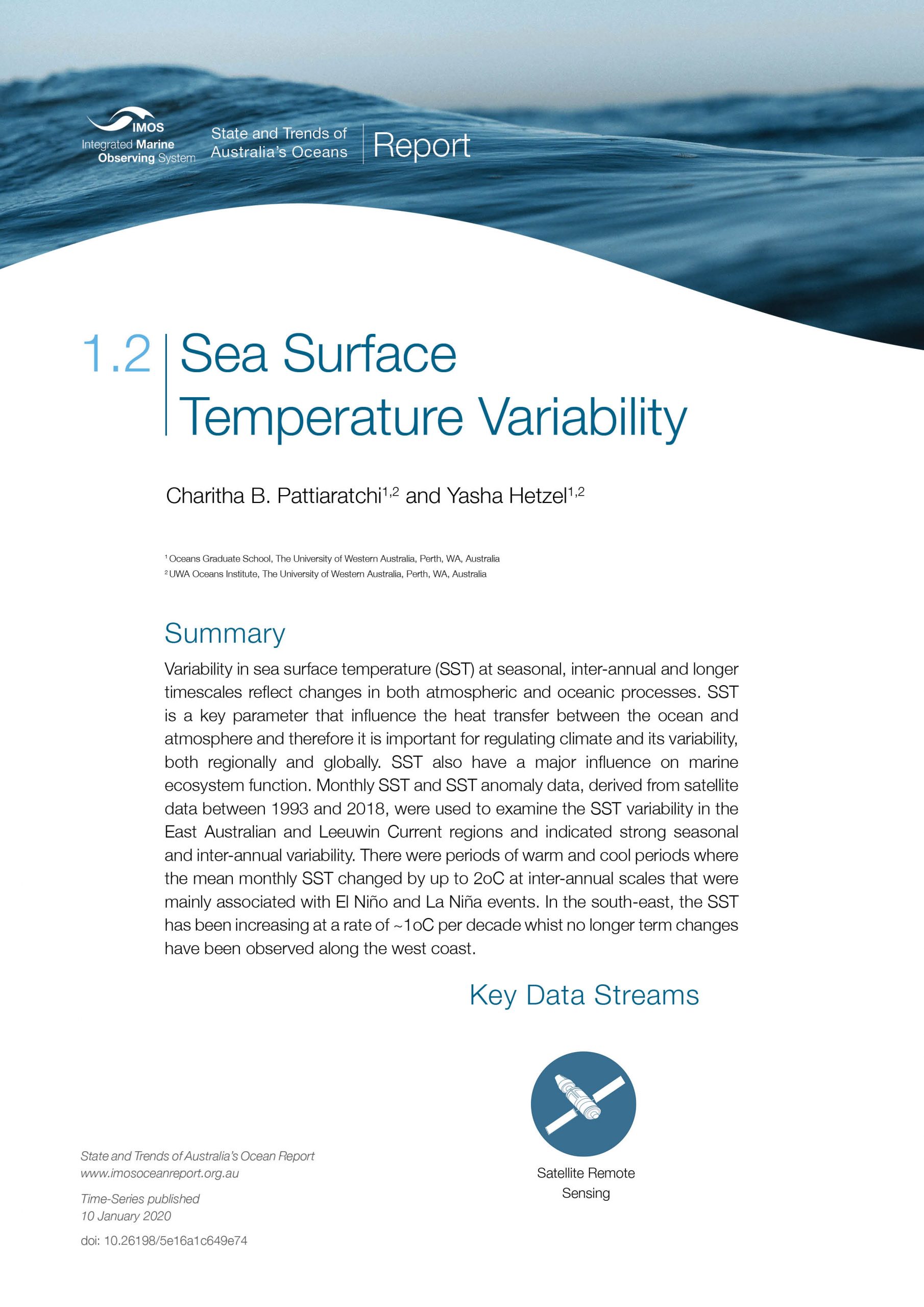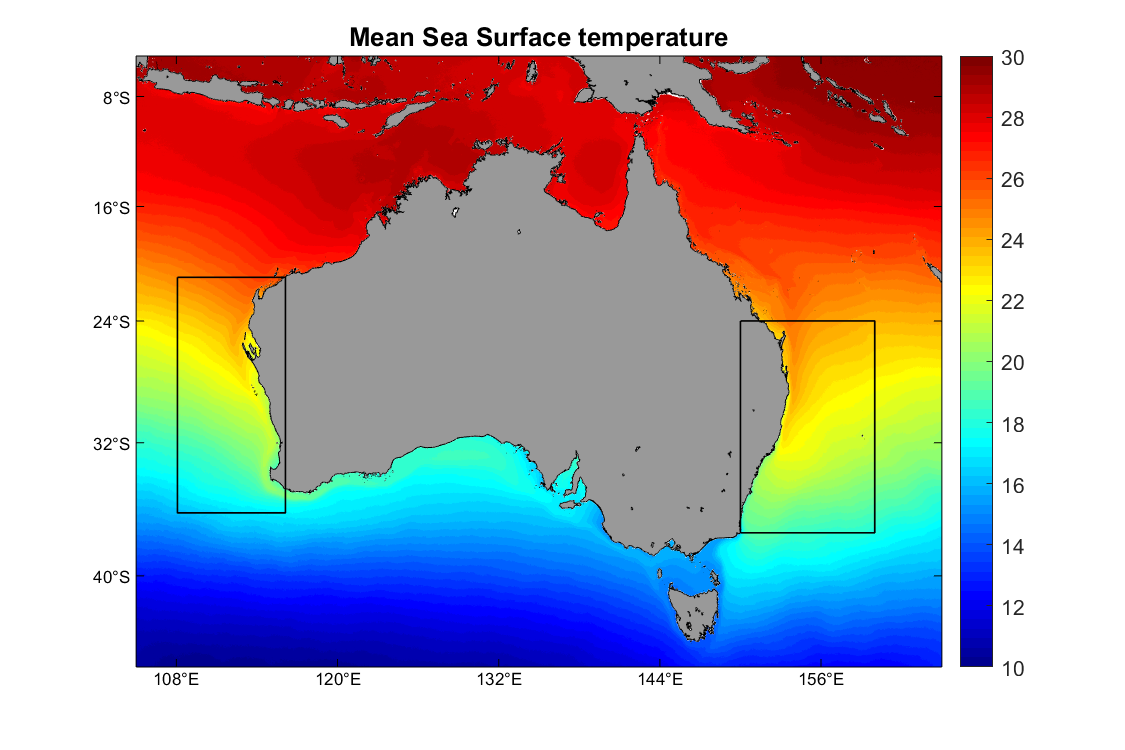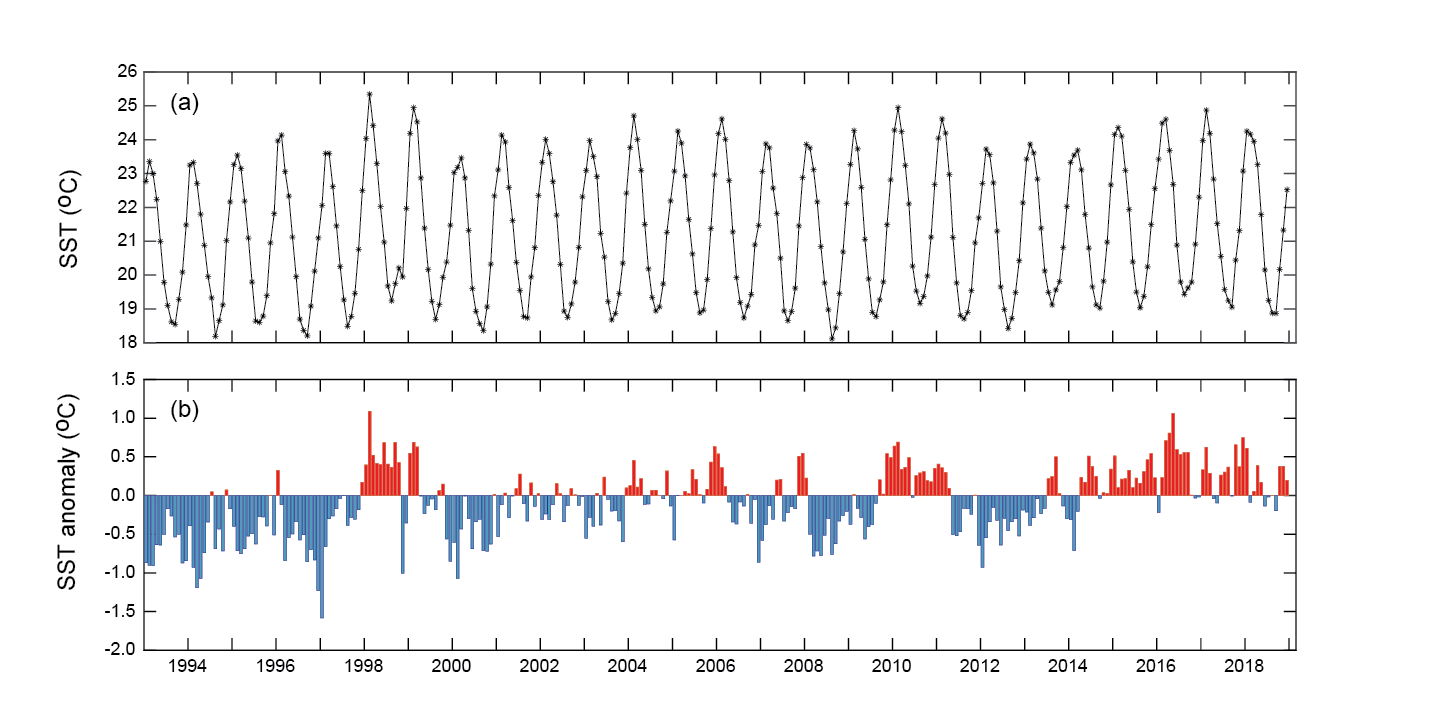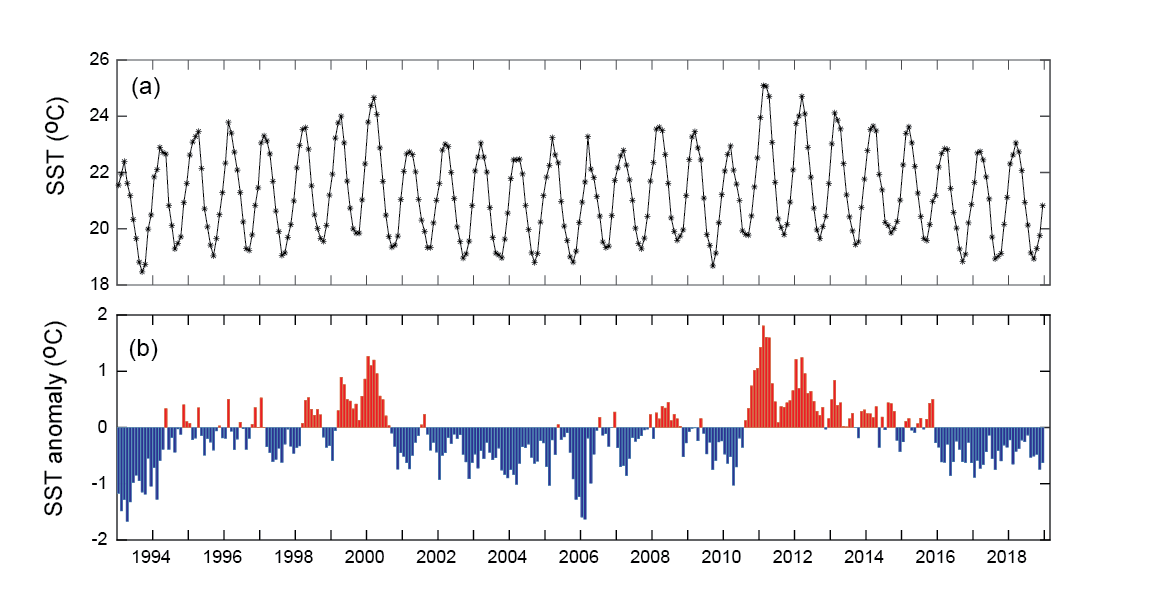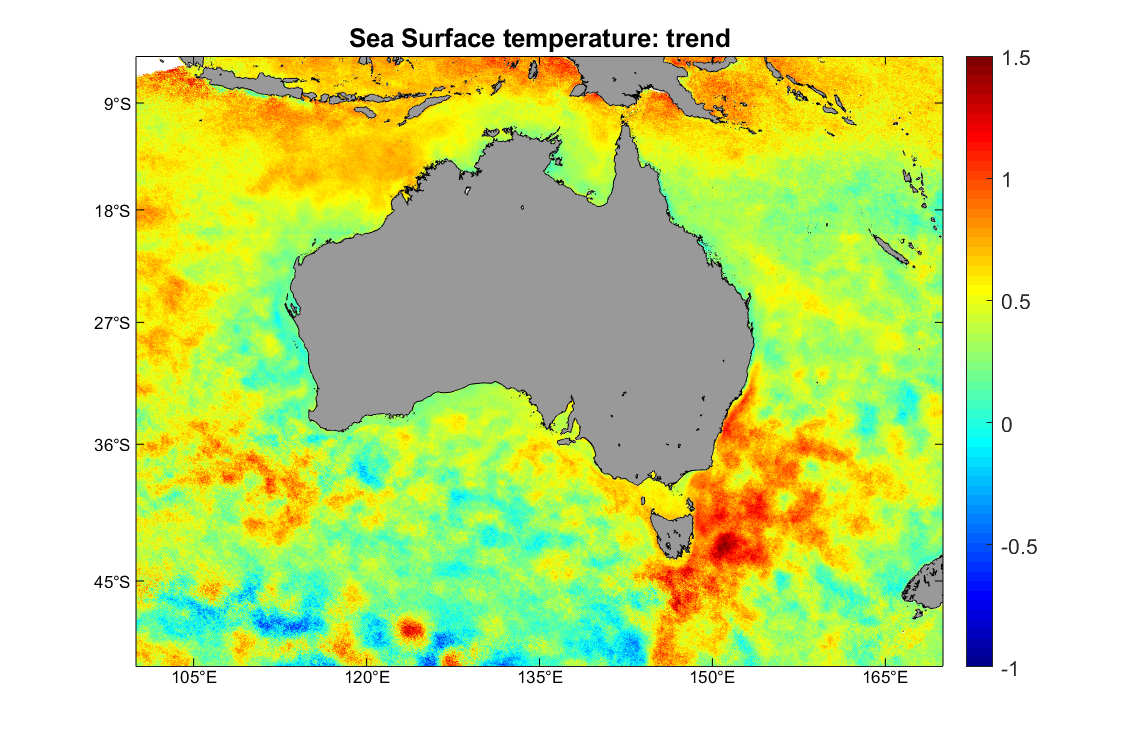Contributors
Charitha B. Pattiaratchi1,2
Yasha Hetzel1,2
1 Oceans Graduate School, The University of Western Australia, Perth, WA, Australia
2 UWA Oceans Institute, The University of Western Australia, Perth, WA, Australia
Key Information
Variability in sea surface temperature (SST) at seasonal, inter-annual and longer timescales reflect changes in both atmospheric and oceanic processes. SST is a key parameter that influence the heat transfer between the ocean and atmosphere and therefore it is important for regulating climate and its variability, both regionally and globally. SST also have a major influence on marine ecosystem function. Monthly SST and SST anomaly data, derived from satellite data between 1993 and 2018, were used to examine the SST variability in the East Australian and Leeuwin Current regions and indicated strong seasonal and inter-annual variability. There were periods of warm and cool periods where the mean monthly SST changed by up to 2oC at inter-annual scales that were mainly associated with El Niño and La Niña events. In the south-east, the SST has been increasing at a rate of ~1oC per decade whist no longer term changes have been observed along the west coast.
Keywords
Atmospheric currents, oceanic currents, SST anomalies, El Niño and LaNiña events
Sea Surface Temperature Variability
Download this Time Series Report
Citing this report:
Pattiaratchi C.B, Hetzel Y. (2020) Sea Surface Temperature Variability. In Richardson A.J, Eriksen R, Moltmann T, Hodgson-Johnston I, Wallis J.R. (Eds). State and Trends of Australia’s Ocean Report. doi: 10.26198/5e16a1c649e74
doi: 10.26198/5e16a1c649e74
